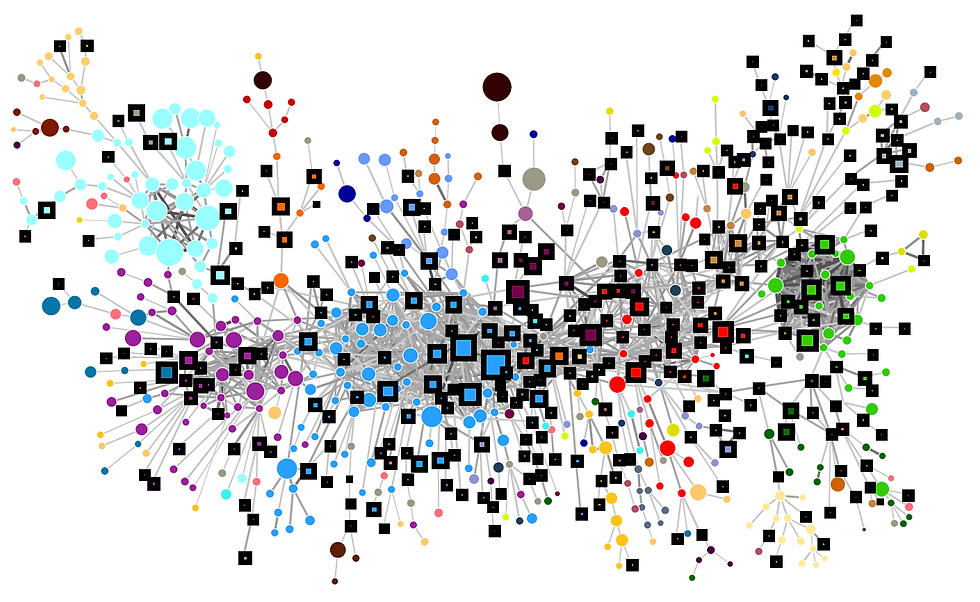Why every business needs a set of Legos?
- Edmund Johnson

- Feb 12, 2021
- 4 min read
Have you heard the latest buzz word from Gartner? The new word is building a “composable business.” What does that mean? Basically, you can assemble the technology of your company just like building something out of Legos. And you can even extend the functionality by adding on some more Legos. And if business priorities change, you can modify the solution by disassembling, adding new Legos, and reassemble to meet the needs of the business.
If you are interested in reading more, check out this link to see Gartner’s presentation on it. But here is a quick summary, a “composable business” is the ability to grow and extend systems by quickly adding applications into the solution. To make it real, lets look at a small business who builds purple widgets. They use a CRM tool and an accounting tool to manage their business. As their business grows, they realize that they need to add the ability to email their customer base. They buy an email marketing tool and with a little configuration, it is pulling data in from their CRM and sending emails. They decide they need a phone system to support customers calling them. They add a phone system and with a little configuration it is integrated with their CRM so that they see the customer record of the caller in the CRM.
This is a significant change to previous thinking around IT systems. Previously, people believed that monolithic systems (a single application or suite of applications) was the best solution for the enterprise. By buying a monolithic solution that is integrated within itself, you don’t have to integrate or double entry anything to share between systems. Companies benefited greatly through common interfaces, reporting, shared data, and reduced integration costs. Often, the business ended up being stuck with a solution that doesn’t meet all their needs. The solution has breath over depth or really strong in one area and really weak in others. And parts of the business just deal with the solution with manual workarounds or extra documentation to work around the problem. I’ve even seen business that would do calculations on Excel and then enter the information into an accounting system.
True “composable business” allow companies to pick best solutions and put them together so that everyone in the business benefits. You can pick one system for accounting, one for treasury, and one for inventory management. They just all work together. Add in some data warehousing that they all publish too and the business has consolidated reporting. If a new business need arises, then just add another application into the solution.
So what changed to make this possible? I think this change is directly related to the emergence of modern SaaS applications. SaaS products are than different than traditional on-premise solutions.
SaaS are modern solutions that are often API first (built with APIs in mind)
SaaS motivated to maintain customers due to reoccurring licensing fees
SaaS often focus on partnerships for missing functionality
Modern SaaS solutions have been built using modern design patterns. The product provides the same set of APIs that their developers use to the customer. This is a powerful practice that allows customers to easily integrate with the solution. Software companies call this an API first design. Having a robust set of API makes integration much easier. It allows both customers and other vendors to integrate without a modifying the package.
The second aspect that makes this possible are improved integration platforms. There have been a ton of solutions for integrations out there for years. The current application platforms have done a lot of work to improve manageability and simplicity of integrations. Combined with standard APIs and tools to perform data mapping, the integrations costs continue to decrease.
Vendor provided integrations between SaaS solutions make choosing best of breed solutions even easier. These integrations are super easy because it is only minor configuration. At my last job, we chose Salesforce as our CRM platform. As we looked to integrate some other solutions to Salesforce, we expected to spend a significant effort to get them connected. Surprisingly, they all provided native integrations with the platform and with a little bit of configuration, we were able to surprise the business with the capability way earlier than planned. With their AppExchange, there are tons of options to easily add new modules to your CRM.
The benefits of a composable architecture are incredible. However, they require planning and discipline to achieve those benefits. By putting good design in place, systems within the enterprise can continue to expand with new modules (applications and systems.) A strong integration platform is critical to support connecting all the systems together. And finally, it is important that you have tools to combine data from each system so that you can do consolidated reporting and find new insights from the data. Achieving good design through patterns, integrations, and reporting is critical or you will lose all benefits of “composable business” and create a mess that will eventually crush the business.
Governance is another critical aspect to a "composable business". Often these solutions promote empowering the business. While certain configuration tasks can be turned over to the business, there is still significant governance in onboarding these solutions and running these solutions. It is critical that IT leaders are looking at the solution from overall portfolio, security, user management, and operational support. The partnership between IT and business can ensure that the solution can continue to grow safely and efficiently.
The dominance of monolithic applications is over. "Composable Business” is the best long-term solution for most business. They allow business to take advantage of the rapid pace of innovation and to quickly add new systems to adjust to changing business needs. They give the business a chance to grow and react without being limited to the available features.



Comments